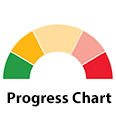No poverty

Traders transport charcoal to the market in Madagascar, among the countries with the world’s highest poverty rates.
© UN News/Daniel Dickinsoninvestments in human capital, measures to address inequality and climate resilience, and international cooperation and partnership.
Extreme poverty rates have returned to pre-pandemic levels except in low-income countries
The COVID-19 pandemic caused extreme poverty to rise in 2020 for the first time in decades, reversing global progress by three years. The share of the world’s population living in extreme poverty rose from 8.9 per cent in 2019 to 9.7 per cent in 2020, driven by increases in low- and lower-middle-income countries. In contrast, extreme poverty continue to decline in upper-middle- and high-income countries, attributed to swift fiscal support for vulnerable groups. By 2022, extreme poverty had returned to pre-pandemic levels in most countries, except low-income ones. In 2022, 712 million people (or 9 per cent of the world’s population) lived in extreme poverty, an increase of 23 million people over 2019. Projections suggest that by 2030, 590 million people, or 6.9 per cent of the global population, may remain in extreme poverty if current trends persist.
In the 75 most vulnerable countries, which qualify for concessional lending from the World Bank’s International Development Association, one in four people live on less than $2.15 a day – more than eight times the extreme poverty rate in the rest of the world. One in three of these countries are now poorer on average than before the pandemic.
Proportion of the population living below $2.15/day, by country income level, 2015–2022 (percentage)

Note: The lack of recent survey data limits the reporting of extreme poverty estimates exclusively for low-income countries.
Working poverty has declined but still afflicts 241 million workers
The global working poverty rate slightly increased to 7.7 per cent in 2020 before declining to 6.9 per cent in 2023. This indicates a consistent downward trend in working poverty worldwide since 2015. Despite progress, nearly 241 million workers globally still lived in extreme poverty in 2023. Little positive change is expected in 2024.
There are wide regional disparities amid the overall positive global trend. Despite a falling working poverty rate, more than half of workers living in extreme poverty were still in sub-Saharan Africa (145 million). Central and Southern Asia notably reduced working poverty by 6.9 percentage points between 2015 and 2023. Conversely, Northern Africa and Western Asia saw an increase in the rate from 2.5 per cent in 2015 to 6.2 per cent in 2023.
Working poverty disproportionately affects some groups. Globally, youth are twice as likely as adults to be in working poverty. Women typically experience higher working poverty rates than men, with the most pronounced gender gap observed in the least developed countries (LDCs).
Proportion of the employed population living below $2.15/day, 2015 and 2023 (percentage)

* Excluding Australia and New Zealand.
Despite improvement, 7 in 10 children worldwide still lack social protection coverage
In 2023, only 28.2 per cent of children aged 0 to 15 globally received child cash benefits, up from 22.1 per cent in 2015. This left 1.4 billion children without social protection coverage. Significant regional variations were evident, and despite a near doubling of coverage from 4.5 per cent in 2015 to 8.7 per cent in 2023, low-income countries were still far from universal coverage. During the same period, lower-middle-income and upper-middle income countries raised coverage from 15.0 to 23.5 per cent and from 21.8 to 27.8 per cent, respectively. High-income countries maintained a continued progression towards universal coverage, with rates rising from 76.8 to 80.5 per cent.
Achieving universal coverage will require closing a major financing gap. To guarantee at least basic social security for all children, upper- and lower-middle-income countries would need to invest an additional $98.1 billion and $88.8 billion, respectively. Low-income countries would require an additional $59.6 billion.
Proportion of children covered by social protection cash benefits, by country income level, 2015–2023 (percentage)

Efforts to reduce disaster impacts and risks have not yet stemmed billions in economic losses
Despite significant efforts to reduce disaster impacts, related economic losses remain stubbornly high. From 2015 to 2022, average annual direct economic losses exceeded $115 billion worldwide, an amount equivalent to 0.3 per cent of the gross domestic product (GDP) of reporting countries.
LDCs and landlocked developing countries (LLDCs) suffer disproportionately from disasters. Disaster-related economic losses in LDCs are over six times the global average. From 2015 to 2022, this group of countries accounted for 6.9 per cent of global reported economic losses from disasters despite comprising only 1.1 per cent of reporting countries’ combined GDP. Similarly, LLDCs reported 4.9 per cent of total economic losses, four times the global average, while accounting for only 1.1 per cent of reporting countries’ combined GDP.
Direct economic losses from disasters, 2015–2022 (billions of dollars)

Government spending on essential services is ticking up but with a chronic gap between advanced and developing economies
Based on recent data from about 100 countries, worldwide government spending on essential services – encompassing education, health and social protection – averages around 50 per cent of total government expenditure. Among advanced economies, this figure rises to 60 per cent, while in emerging market and developing economies, it stands at 40 per cent. Over the past two decades, both groups have seen a slight uptick in their shares, maintaining a consistent 20-percentage-point gap between them.
On the components of essential services, advanced economies notably outpace emerging market and developing economies in social protection spending by roughly 15 percentage points on average, largely due to broader pension coverage. Health spending accounts for about 5 percentage points of this difference. The pandemic temporarily skewed these trends, with increased spending on social protection and health and a decline in education expenditure due to school closures. While these measures are expected to be short-lived, prolonged health issues and educational losses among individuals could potentially have long-term impacts on human capital.
Proportion of total government spending on essential services, 2000–2022 (percentage)


